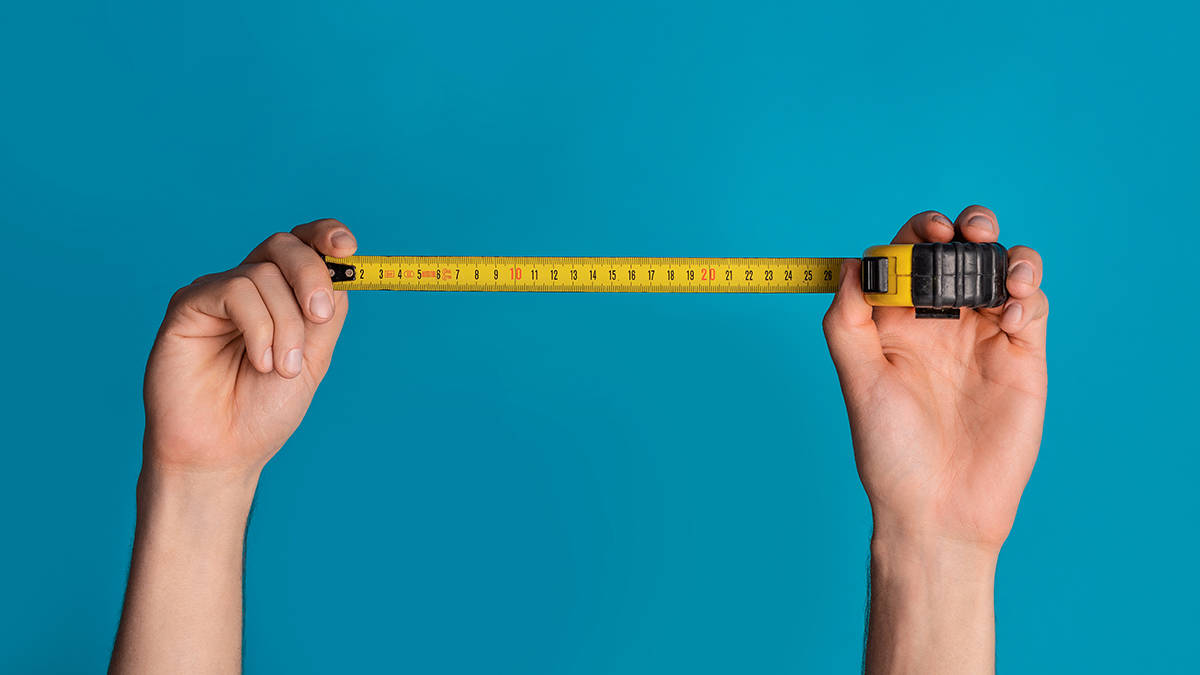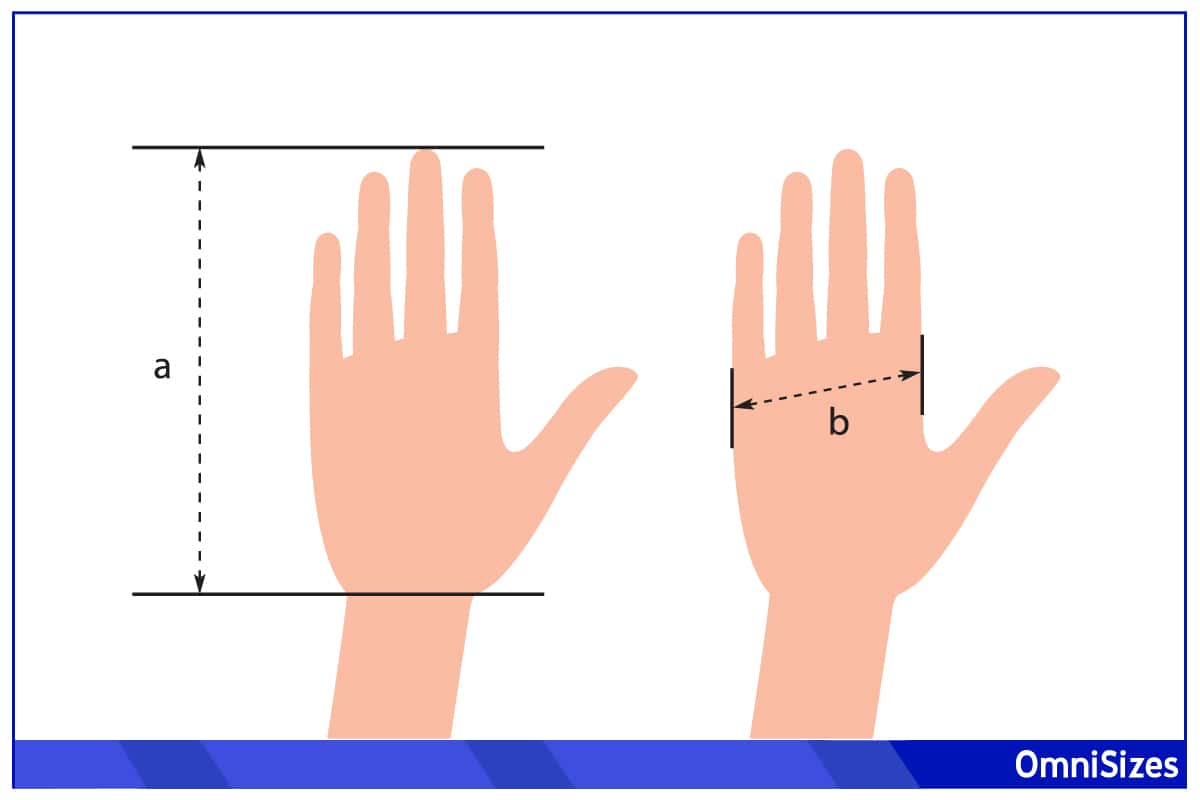Hand size affects everything from the way we interact with objects to our physical abilities. The phrase “average hand size” sparks curiosity about how our hands compare to others. It’s a topic filled with fascinating insights, linking biology, culture, and even psychology.
The average hand size for adult males is about 7.6 inches long and 3.5 inches wide, while for adult females, it’s around 6.8 inches long and 3.1 inches wide. Length is measured from the tip of the middle finger to the base of the palm, while width is the palm’s measurement from side to side.
This guide will go into more detail regarding this fascinating topic, from the factors that affect hand size to extreme hand size records.
Basics of Hand Size
Hand size reveals a lot about a person. While it can help determine your glove size, hand size has deeper implications in health and genetics.
Our hands, complex structures with bones, muscles, and tendons, are unique to each individual. The size of a hand typically refers to its length and width.
Length is measured from the tip of the longest finger to the base of the palm, while width spans the broadest area of the palm. These measurements, however, just scratch the surface. Finger length, palm thickness, and even fingertip sizes add layers to this seemingly simple topic.
When we talk about average hand size, we’re delving into a fascinating aspect of human diversity. The average hand size varies between men and women.
For men, the average hand length typically ranges around 7.6 inches (19.3 centimeters), with a width of about 3.5 inches (8.9 centimeters). Women, on the other hand, have an average length of about 6.8 inches (17.3 centimeters) and a width of 3.1 inches (7.9 centimeters).
Determinants of Hand Size
But here’s the thing: these are just averages. Actual hand sizes can vary widely among individuals, influenced by factors such as genetics, age, and overall body size.
1. Genetic Blueprint
Our genes are the starting point for hand size. They’re like a blueprint, dictating the potential size and shape of our hands. This genetic aspect explains why family members often have similar hand sizes and why there’s so much variation across different populations. Even finger proportions and palm shape are influenced by our genetic makeup.
2. The Role of Hormones
Hormones, especially during growth phases like puberty, significantly impact hand size. Growth hormones and sex hormones (like testosterone and estrogen) play their parts in hand development. Generally, higher levels of growth hormones lead to larger hands. That’s why men, who typically have higher testosterone levels, often have larger hands than women.
3. Nutrition’s Impact
What we eat during our growing years can influence hand size. Adequate nutrition is key for proper growth, providing the body with the necessary resources to develop to its full potential. This includes our hands.
4. Health Conditions
Certain health conditions can affect hand size. Conditions like Marfan syndrome or gigantism can lead to unusually large hands, while others like dwarfism can result in smaller hands. These conditions are rare, but they highlight how health can influence hand size.
5. Activity and Exercise
Our daily activities and exercise habits can also play a role. While they don’t drastically change hand size, activities like playing instruments or engaging in sports can develop the muscles in the hands, affecting overall hand shape and dexterity.
6. Age-Related Changes
As we age, our hands change. In children and teenagers, hands grow in size and proportion. In adults, while the bone size remains stable, hand appearance can change due to muscle or fat changes, or due to conditions like arthritis.
Measuring Your Own Hand Size

Measuring your own hand size can be pretty useful, whether you’re picking out gloves, gauging your potential in certain sports, or just curious.
DIY Measurement Guide
- Length Measurement: Grab a ruler or a tape measure. Place one end at the base of your palm (where it meets your wrist) and measure to the tip of your middle finger. That’s your hand length.
- Width Measurement: To measure the width, wrap the tape measure around the widest part of your palm, just below your fingers.
- Ensure Accuracy: For the best results, measure your dominant hand, and keep your hand and fingers relaxed.
Interpreting Your Measurements
Larger hands might give you an edge in sports like basketball or swimming, where hand span can influence performance. Smaller hands, on the other hand, might be more adept at tasks requiring fine motor skills, like playing certain musical instruments.
Hand Size Myths
There’s a lot of folklore about what hand size signifies, from personality traits to intelligence. It’s fun to speculate, but scientifically, these claims don’t hold up. Hand size is more about physical attributes and less about defining who you are.
Extreme Hand Sizes and Records
Most of us fall within a certain hand size range. But there are those who stand out with hand sizes that are either much larger or smaller than average. These extremes can be fascinating, sometimes even record-breaking.
World’s Biggest hands
There’s a whole world of records when it comes to hand sizes. The Guinness World Records, for instance, keeps track of some of these remarkable stats. One of the most notable is the record for the largest hands ever. This record belongs to Robert Waldow from the US, with hands measuring an astounding 12.75 inches (32.3 cm) long!
World’s Smallest Hands
On the opposite side of the size spectrum, the title of the smallest hands belonging to an adult goes to Afshin Ghaderzadeh from Iran. His left and right hands are 2.63 inches (6.7 cm) and 2.51 inches (6.4 cm) long. Coincidentally, he also holds the title for being the shortest man alive.
Biggest NBA Player Hand Size
Currently, in the NBA, Giannis Antetokounmpo and Kawhi Leonard are renowned for their large hands (9.85 and 9.75 inches, respectively). Historically, the record for the biggest hands (10.75 inches or 27.3 cm) goes to Boban Marjanović, a journeyman from Serbia who currently plays for the Houston Rockets. Shaquille O’Neal is in second place with (10.25 inches or 26 cm).

